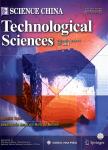Comparison study of trapped water in human erythrocytes by EPC and DSC method and its application
Comparison study of trapped water in human erythrocytes by EPC and DSC method and its application作者机构:Cryobiomedical Engineering Research Institute Department of Thermal Science and Energy Engineering University of Science and Technology of China Hefei 230027 China Red Cross Blood Center of Hefel Hefei 230022 China Department of Mechanical Engineering University of Kentucky Lexington KY 40506-0108 United States
出 版 物:《Science China(Technological Sciences)》 (中国科学(技术科学英文版))
年 卷 期:2004年第47卷第3期
页 面:343-351页
核心收录:
学科分类:1001[医学-基础医学(可授医学、理学学位)] 10[医学]
基 金:the Chang-Jiang Scholar Award, Hundred-Talent Award of the Chinese Academy of Sciences(2000-2003) 国家自然科学基金(50106016) the Natural Sciences Foundation of Anhui Province(Grant Nos. 00047520,03043717)
主 题:differential scanning calorimeter/DSC, electronic particle counter/EPC, cell volumetric change, red blood cell/RBC/erythrocyte
摘 要:The novel differential scanning calorimetry method for determining trapped water volume of human red blood cell during freezing process has been reexamined. Results show that the final erythrocyte volume is 53% of its isotonic volume after freezing to -40℃. An electronic particle counter (MultisizerTM III, Beckman Coulter Inc., USA) was used to measure cell volume changes in response to hypertonic solution. Using this approach, when extracellular solution was 3186 mOsm, the equilibrium cell volume was found to be 57% of its isotonic value. Both results indicate that 34%—40% of intracellular water is trapped and cannot respond to osmotic difference between intra- and extracellular solution. These findings are consistent with the published data: at least 20%—32% of the isotonic cell water volume is retained within RBCs during freezing. Some applications of the values of trapped water are addressed.



